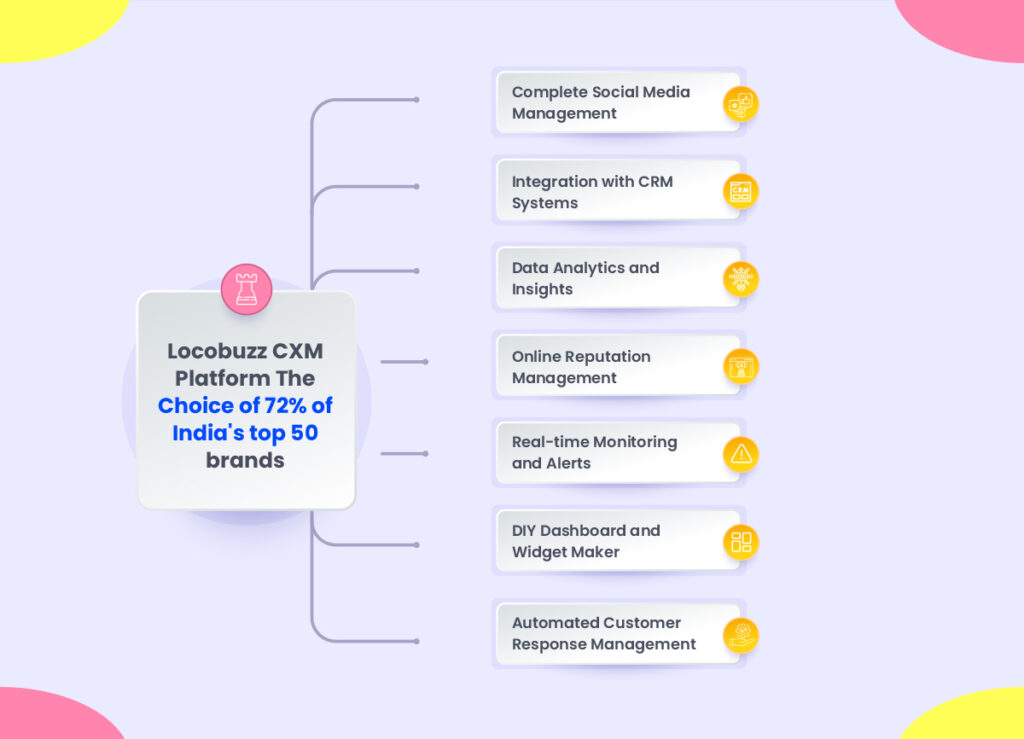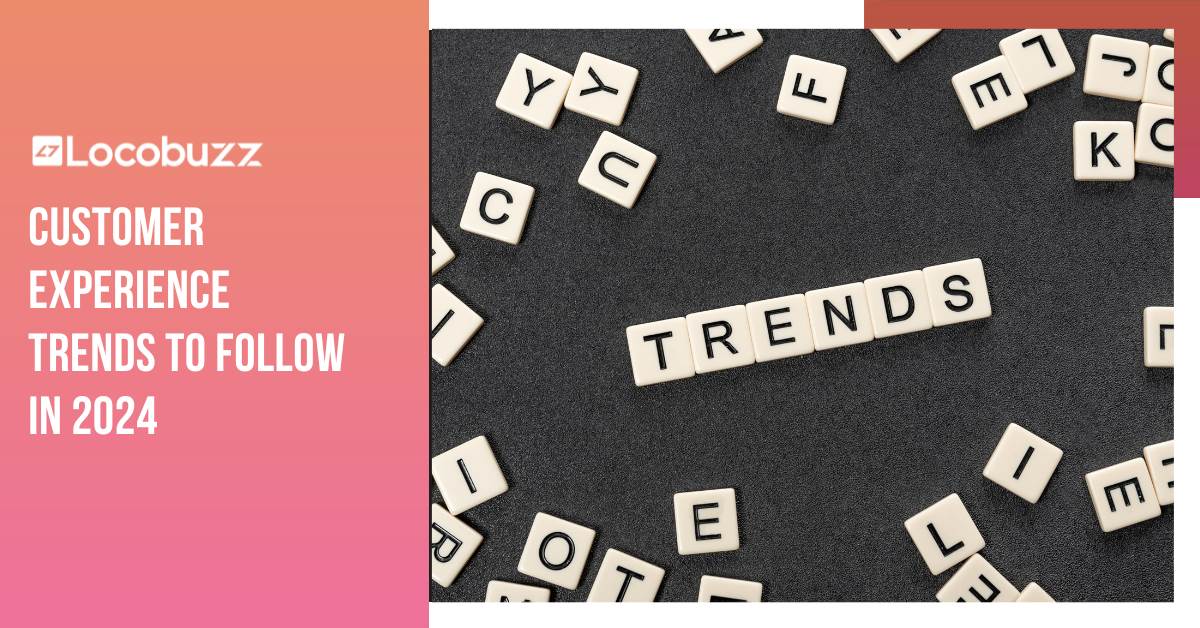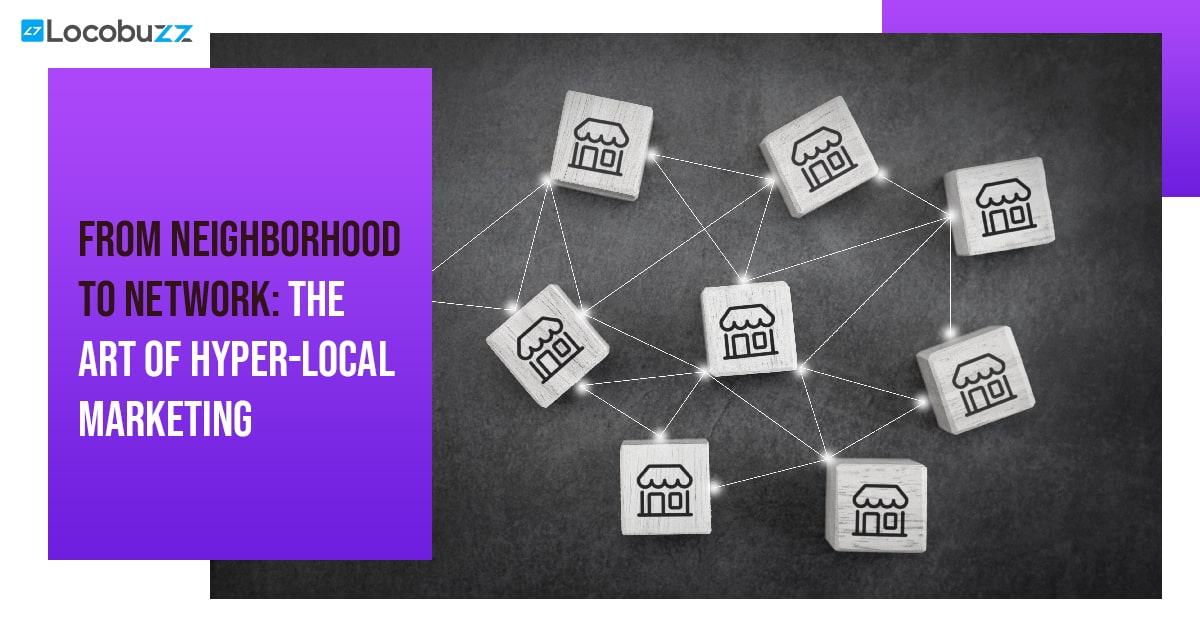Customer Experience Management: What Is It and How Does It Help Your Business?
 Customer experience (CX) is the new buzzword in the customer service industry. From small stores to multinational corporations, all businesses have benefited from focusing on customer satisfaction. That’s why there are new customer service tools and strategies coming up in the market in recent times.
Customer experience (CX) is the new buzzword in the customer service industry. From small stores to multinational corporations, all businesses have benefited from focusing on customer satisfaction. That’s why there are new customer service tools and strategies coming up in the market in recent times.
Keeping your customers happy can never go wrong! Research says that 86% of buyers are willing to pay more if they get great customer service. This just goes to show that you must work on perfecting not only your products but also your CX.
This is where customer experience management comes into play.
Table of Contents
What Is Customer Experience Management?
Customer experience management or CXM/CEM is the framework of marketing strategies and technologies that work towards ensuring high customer engagement, along with positive experience and satisfaction with the service.
CXM creates a personalized experience in the end-to-end customer interaction process. It involves building relationships with customers through digital mediums and marketing software.
For instance, a customer reacts to your product in a certain way, let’s say by clicking a link or sending a query. Then, you respond to the customer and start a journey where you meet their expectations and provide the right solutions. The customer is interested and decides to buy a product.
This way, you gain a customer and open up the chances of retaining them, bringing them back for another purchase, or getting recommended by them. To do so, you must know the customer, their preferences, and their buying behavior. That can be achieved through modern, AI-driven technology.
But before investing in technology to gauge customer experience, you must wonder why we need it at all.
Why Do You Need CXM?
Customer experience management tells you to collect customer data from all touchpoints and channels, then use the data to gain customer insights. These insights are super valuable to your organization. They can make all the difference to marketing campaigns, product decisions, or success rates.
If that’s not reason enough, here’s why else you need customer experience managemet for your business.
- Managing the customer experience brings tangible value to a business. Customers are willing to invest in price premiums of about 13% for luxury services if they have a good experience.
- It helps to strengthen brand recognition and preference.
- CXM helps boost revenue with incremental sales from old customers and get new recommendations.
- It improves customer loyalty and reduces churn. Thus, you can build long-term relationships with people who will spend on your product.
- It lowers costs through a smart integration of technology and human agents.
- You can get a better understanding of your target audience.
- Good customer service gives you a competitive edge in the market.
- You can measure the success rate of your initiatives and make informed business decisions.
Since customer satisfaction is the key to so many growth opportunities, let’s find out how to create a good customer experience!
How to Create a Good Customer Experience?
 Most customer engagement management strategies are based on the needs and goals of a business. But, there are a few universal hacks that can help you assure your customer never leaves with a bad taste in their mouth.
Most customer engagement management strategies are based on the needs and goals of a business. But, there are a few universal hacks that can help you assure your customer never leaves with a bad taste in their mouth.
Analyze Your Target Audience
Analyzing audience doesn’t just mean keeping track of who bought what; it is about gathering behavioral data like customer needs, touchpoint preferences, decision drivers, and emotional involvement.
Market research tools and AI-driven software help companies collect this data and use it to segment customers, map journeys, and use the information to improve their experience.
Build Connections with Users
Just knowing about customers isn’t enough. You must use this information to build personal connections with users. Customers love brands that offer a personal touch with their service, like offers on birthdays, discounts and gifts with repeated purchases, and so on.
Emotion is a huge driving factor in buyer decisions, so you can never go wrong with steps that make your brand feel like a part of the customer’s life rather than just a buy. Hence building a positive connections with users helps increase your customer experience management.
Capture and Analyze Feedback
What’s the best way to find out how awesome your customer experience management is? Simple, ask the customers! Gathering customer feedback on a real-time basis is a key aspect of CXM.
You can do this via live chat tools, call analysis, follow up emails, post-sale surveys, and feedback channels. Customer feedback is a gateway towards their needs and wants, so analyze and use this information to earn their approval and score higher on the satisfaction board.
Manage Customer Journey
Optimize Touchpoints
Each touchpoint where your customers come into contact with you needs special attention. For instance, if you see that your email ticket raising system is prompt but chat support takes some time to connect, make sure you put more agents on chat so that customers don’t have to wait long.
Small measures like these go a long way in ensuring your customers have a holistic experience with your brand, no matter which channel they come from.
Analyze and Adapt
Customer Experience Journey

Imagine you’re putting on a captivating show on a stage. The audience is made up of different people, each with their own desires, fears, and dreams.
Your goal is to create an experience that exceeds their expectations.
The show begins with the Awareness Stage. You grab their attention through social media, blogs, and eye-catching ads. They become curious and excited to explore what you have to offer.
Next is the Research and Consideration phase. You guide them through a maze of information, providing helpful articles, product demos, and positive reviews. They feel informed and connected to your brand.
Now, it’s time for the Purchase Stage. Your customers are ready to make a decision, and you make it easy for them. Your website is user-friendly, prices are transparent, and there are multiple ways to buy. They see you as trustworthy and effortless to work with.
As they become customers, you welcome them during the Onboarding and First Experience. You provide clear instructions, engaging tutorials, and personalized support. They feel valued and prepared for their journey with your brand.
In the Usage and Support stage, you’re there to help whenever they need it. They can use self-service tools, chatbots, or reach out to a dedicated support team. Your goal is their satisfaction and happiness.
Retaining their loyalty is vital in the Retention and Loyalty stage. You reward their loyalty with exclusive access, loyalty programs, and surprises tailored to their preferences. They become devoted fans and ambassadors for your brand.
Feedback and Improvement are crucial for continuous growth. You actively seek their opinions through surveys, feedback forms, and online reviews. Their input guides your efforts to improve and excel.
Finally, Advocacy and Referrals come into play. Your customers become storytellers, sharing their amazing experiences with others. They write testimonials, spread the word on social media, and recommend your brand to their friends.
In essence, the Customer Experience Journey is a journey of emotions, connections, and unforgettable moments.
It’s about building relationships, earning loyalty, and making dreams come true.
So, embrace the journey and let the symphony of customer experience resonate in every interaction with your brand.
CRM vs CXM: Vital Difference
Customer Relationship Management primarily focuses on managing customer data, interactions, and relationships. It involves capturing and organizing customer information, tracking sales activities, and managing customer touchpoints throughout the sales cycle.
CRM systems excel in capturing and analyzing customer data, including contact information, purchase history, and customer interactions. This data helps businesses manage customer relationships, identify sales opportunities, and forecast future revenue.
Customer Experience Management, on the other hand, is a broader concept that encompasses the entire customer journey. It focuses on understanding and optimizing the customer’s overall experience across multiple touchpoints and channels, including pre-sales, sales, and post-sales interactions.
CXM platforms leverage data from multiple sources, including CRM systems, social media, surveys, and customer feedback, to gain a holistic view of the customer experience. The insights obtained from CXM analysis help businesses understand customer sentiment, preferences, and pain points, enabling them to improve the overall experience.
While CRM and CXM serve different purposes, they are not mutually exclusive. Many businesses integrate CRM and CXM systems to leverage the strengths of both and create a holistic approach to customer management, combining the benefits of data-driven insights from CRM with the customer-centric focus of CXM.
Three Steps to Achieving Success in Customer Experience Management
Maintain Customer Profiles
This also comes down to the fact we’ve stated multiple times before: you got to know your customer! And how better to do that than maintaining updated customer profiles? This will help you understand the journey of a customer at every touchpoint and channel on your CX system.
The better you know your customer, the more streamlined your customer service can be. Use customer data to craft relevant offers, personalized messages, and targeted campaigns. Ultimately, you will be able to form an emotional relationship with your customer base, leading to loyalty and retention.
Structured data like demographics and transactional logs help create customer profiles. You can also include data types like geolocation, social media, contact and response, propensity scores, and behavioral analysis to build a cross-channel database. This will help you:
- Learn how to improve customer experience on specific channels
- Know how, when, and what customers want
- Gauge their expectations from your service quality
- Make decisions faster
Personalize Interactions
We’ve talked on and off about personalizing customer interactions. But how do you do it? Understand customer choices, but more importantly, the context of their choices. Gather data that helps you provide insightful offers, actions, and advice to your customers.
We know that your goal is to sell. But a customer must see you as a guide and well-wisher rather than a sale-pusher. You can suggest your higher products when a customer is receptive, but first you must build trust through personalized interactions.
Bland and generic communication is everywhere. If your customer gets the same from you, they won’t hesitate to abandon your company and move on.
Deliver the Right Message
Every step of a buyer’s journey needs a different approach to get a conversion. Use analytics and AI to map specific stages of a customer life cycle so you can deliver the right message to the right person at the right time.
For instance, if a customer is first exploring your business, they need a gist of what you offer. Huge details and upsell pitches at this point would scare them away.
But if a customer is one step from buying a basic product, this is when they are open to learning about better offers or higher variants.
Judge each stage of the buying process and deliver messages to improve the customer experience. You can also draw feedback while doing so.
Don’t forget your messages must be relevant, time-sensitive, helpful, and customized. Otherwise, there are many competitors who are waiting to snatch up your disappointed customer. Hence deliver the Right Message to develop your customer experience management.

CXM Challenges
So far, customer experience management seems simple enough. But, there are challenges that can ruin your strategy.
- The first hurdle is creating a consistent brand voice across all your channels. If your brand value proposition is not the same across all your touchpoints, it creates a jarring experience that customers wouldn’t love.
- Integrating technology into your organizational system can also be a challenge. Adopting new tech platforms can take some time to get used to, so you must set up a learning model to cope with the changes.
- The final challenge that most companies face, but few find out, is consolidation of data into a single view. Generally, data is divided into silos based on interactions, departments, channels, products, and time periods. Fragmented data can mess up your insights and degrade your CX strategy over time.
Management techniques and strategies for CXM
Effective management techniques and strategies are crucial for successful Customer Experience Management (CXM) initiatives.
To optimize customer interactions and enhance satisfaction, organizations should foster a customer-centric culture throughout the company, making customer satisfaction a top priority.
Actively listen to customer feedback through various channels and use that feedback to identify areas for improvement.
Mapping out the customer journey helps gain insights into touchpoints and moments that can be enhanced.
Personalization is key—leverage customer data to deliver tailored experiences.
Invest in employee training and empowerment to equip them with the skills and authority to resolve customer issues promptly. Provide a seamless omnichannel experience, integrating data and channels.
Use data analytics to gain insights into customer behavior and preferences.
Foster a culture of continuous improvement by setting goals based on customer experience metrics.
Encourage collaboration and cross-functional alignment to deliver a consistent experience. Embrace innovation and adaptability to stay ahead of evolving customer expectations and leverage emerging technologies.
By implementing these techniques and strategies, organizations can create a customer-centric approach to CXM, driving satisfaction and building long-term loyalty.
CXM Software

Customer Experience Platforms (CXPs) software, are tools or software solutions designed to help businesses manage and improve the overall customer experience across a variety of touchpoints and interactions.
Companies can use CXM software to collect, analyse, and act on consumer data in order to deliver unique and tailored experiences. CXM software has the following primary features and capabilities:
Data Collection and Integration: CXM software allows businesses to collect consumer data from a range of platforms, including websites, mobile apps, social networking sites, and customer service channels. This data is integrated and consolidated, yielding a uniform consumer perspective.
Customer Journey Mapping: Companies can use CXM software to map and display the customer journey across various touchpoints and interactions. This makes it easy to identify issues, places for improvement, and opportunities to improve the overall client experience.
Personalization and Audience Segmentation: CXM software provides customised customer experiences by providing specialised content, offers, and suggestions based on audience segmentation. It allows businesses to understand consumer preferences, behaviour, and purchase trends in order to design effective customised strategies.
Omnichannel Engagement: CXM software supports businesses in offering a consistent and seamless customer experience across several channels and devices.
It permits communication over platforms including websites, mobile apps, social media, email, chat, and call centres, delivering a consistent user experience everywhere.
Customer Feedback and Surveys: Client feedback and surveys are two methods that businesses can use to obtain information and gauge client satisfaction. It offers resources for developing and distributing surveys, reviewing the results, and gaining useful information to enhance customer experiences.
Real-time analytics and reporting: To track and gauge customer experience indicators, CXM software offers powerful analytics and reporting capabilities.
It provides key performance indicators (KPIs), reports, and real-time dashboards to monitor customer satisfaction, engagement, conversion rates, and other pertinent information.
Customer Service and Support: Certain CXM software includes customer service and support services such as ticket management, knowledge bases, chatbots, and self-service portals. These solutions enable businesses to provide excellent and personalised customer support while promptly resolving problems and concerns.
Workflow automation: CXM software typically includes automation capabilities to streamline and automate customer-centric procedures. It enables organisations to automate mundane procedures, send tailored emails in response to client activities, and ensure timely follow-ups.
Integration with CRM and Marketing Tools: CXM software connects with customer relationship management (CRM) systems, marketing automation tools, and other business systems to share data and create consistent customer experiences across the customer lifecycle.
Artificial Intelligence and Machine Learning: Advanced CXM software employs artificial intelligence (AI) and machine learning (ML) algorithms to assess customer data, forecast consumer behaviour, make sensible recommendations, and automate tailored interactions.
CXM software, in general, enables businesses to understand, interact with, and delight customers at every touchpoint, increasing client loyalty, advocacy, and retention.
Companies can use consumer data and insights to optimise their goods, services, and interactions to deliver exceptional customer experiences that set them apart in the market.

Locobuzz: One Stop Complete CXM Platform
Locobuzz is an advanced Customer Experience Management (CXM) platform that offers a comprehensive suite of tools and features to help businesses manage and optimize their customer interactions across various channels.
As a one-stop solution, it brings together multiple aspects of CXM, including social media management, customer engagement, sentiment analysis, and analytics, into a single unified platform.
Here is an exciting video that showcases the power and benefits of using Locobuzz for your brand
Final Thoughts
All said and done; your customer experience management is as good as the tools that support it. To know your customers, build a tight service pipeline, and improve customer satisfaction scores, you must get hold of the right technology to support your cause.
Locobuzz is a one-stop platform for all your customer-centric needs! Its unified CXM delivers consistent and seamless experience across all your channels with advanced AI-driven insights to make your customer experience management a complete success. Revolutionize your customer service with our new-generation solution and build long-lasting relationships with your customers!

















